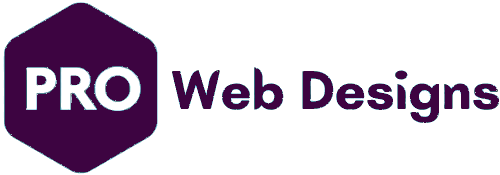Web Development Basics: A Comprehensive Guide for Beginners
Introduction to Web Development
Web development encompasses the skills and techniques involved in creating and maintaining websites. It’s a dynamic and ever-evolving field that encompasses a wide range of tasks, from designing user interfaces to building complex web applications.
Essential Web Development Languages
Three core languages form the foundation of web development:
HTML (HyperText Markup Language): Defines the structure and content of web pages using tags and elements.
CSS (Cascading Style Sheets): Controls the visual presentation of web pages, including colors, fonts, and layouts.
JavaScript: Adds interactivity and dynamic behavior to web pages, enabling user actions and animations.
Front-End- vs. Back-End-Entwicklung
Web development can be broadly divided into two main areas:
Front-End-Entwicklung: Focuses on the user-facing aspects of a website, including the design, layout, and interactivity.
Back-End-Entwicklung: Deals with the server-side logic and functionality of a website, handling data storage, user authentication, and communication with databases.
Full-Stack Development
Full-stack developers possess expertise in both front-end and back-end development, enabling them to build complete web applications from scratch.
Building a Website: A Step-by-Step Guide
Planning and Design: Define your website’s purpose, target audience, and desired features. Create wireframes and mockups to visualize the layout and design.
HTML Structure: Start by creating the basic HTML structure of your website, defining the main sections, headings, and content elements.
CSS Styling: Apply CSS styles to enhance the visual appearance of your website, including colors, fonts, layouts, and responsiveness.
JavaScript Interactivity: Add JavaScript code to introduce dynamic elements, such as user interactions, animations, and form validation.
Testing and Deployment: Thoroughly test your website across different browsers and devices before deploying it to a live server.
Resources for Learning Web Development
Online Tutorials: Numerous online tutorials and courses offer a structured approach to learning web development basics.
Interactive Coding Platforms: Practice coding in real-time using interactive platforms that provide feedback and challenges.
Books and Documentation: Refer to comprehensive books and official documentation to gain in-depth knowledge of web development concepts.
Online Communities: Engage with online communities of web developers to seek guidance, share knowledge, and collaborate on projects.
Abschluss
Web development offers a rewarding and challenging career path, enabling you to create innovative and impactful digital experiences. By mastering the fundamentals of HTML, CSS, and JavaScript, you’ll lay the groundwork for a successful journey into the world of web development. Remember, web development is a continuous learning process, so stay curious, explore new technologies, and never stop expanding your skillset.
Call to Action:
Ready to embark on your web development journey and build your first website?
Our team of experienced web developers can guide you through the process, providing personalized instruction and support tailored to your learning style. We’ll help you grasp the essential concepts, develop hands-on coding skills, and create a website that showcases your newfound knowledge and creativity. Contact us today to take the first step towards becoming a proficient web developer!
Integrating Custom JavaScript and CSS for Enhanced Design
Einführung
Custom JavaScript and CSS code offer unparalleled control over your WordPress website’s appearance and behavior. By strategically incorporating these elements, you can create unique and engaging user experiences. This guide provides essential tips and techniques for effective integration.
Understanding the Basics
- Where to place code: Discuss options like child themes, header/footer sections, and plugins.
- Enqueuing scripts and styles: Explain how to properly register and enqueue scripts and styles.
- Dependency management: Discuss managing dependencies between scripts and styles.
Enhancing Design with Custom CSS
- Overriding theme styles: Demonstrate how to target specific elements and modify their appearance.
- Creating custom styles: Explain how to add new styles for unique design elements.
- Responsive design: Emphasize the importance of writing responsive CSS.
- Performance optimization: Provide tips for minimizing CSS file size and improving load times.
Adding Interactivity with Custom JavaScript
- Basic JavaScript functionality: Cover core JavaScript concepts and syntax.
- DOM manipulation: Explain how to interact with website elements using JavaScript.
- Event handling: Discuss techniques for creating interactive elements.
- AJAX for dynamic content: Showcase how to fetch data asynchronously without page reloads.
Best Practices for Integration
- Code organization: Structure your code for maintainability and readability.
- Performance optimization: Minimize script and style file sizes.
- Error handling: Implement error handling to prevent unexpected behavior.
- Compatibility: Test your code across different browsers and devices.
- Security: Protect your website from vulnerabilities by sanitizing user input and validating data.
Abschluss
By effectively integrating custom JavaScript and CSS, you can elevate your WordPress website’s design and functionality. Remember to prioritize performance, user experience, and security while experimenting with these techniques. Continuous testing and refinement are essential for achieving optimal results.
Benötigen Sie eine professionelle Website-Einrichtung? Kontaktiere uns Jetzt.







